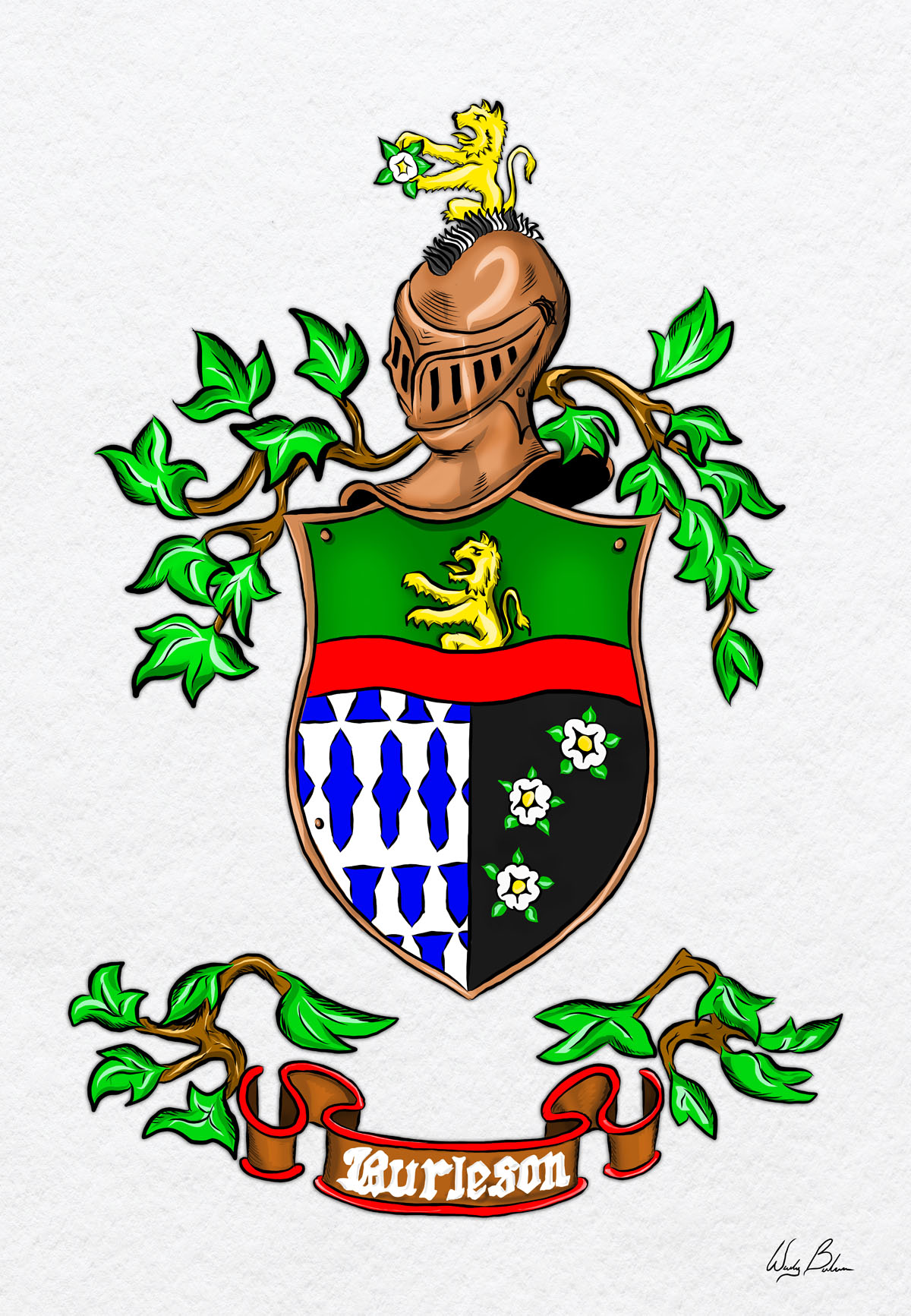By Donald K. Burleson

Origin of the Burleson Occupational Surname
Additional Information on the Origin of the Burleson Surname by Don
Early Information Contributed by the Burleson Family Association
The Burleson family and the Burleson family name is of English origin, with the name being of the surname type known as an occupational name. The Old English or Saxon language had the word burle meaning “to dress or finish cloth” by removing the small burs or knots of thread sometimes formed in weaving. That produced an original name of Burle, and the son of Burle became Burleson. The name appeared in northern England near the Scotch border very early, for ancient English records mention a certain Hugo Burleson by the year 1202, and there is also mention of a John Byrleson by about 1210. That difference in spelling was often found in all family names. The Burleson family came to America prior to the American Revolution, and the Census of 1790 (the first census ever taken for the United States) listed no less than six Burleson families in North Carolina. Two of those families, the families of David Burleson and Isaac Burleson, were living in Montgomery County in 1790, and they were in that area of Montgomery County which was later cut off to form the new county of Stanly.
The Burleson coat of arms follows:
ARMS: Per fesse; a fesse wavy gules, chief part vert, a lion rampant or; the base per pale. dexter side vaire, the sinisterside sable, three roses argent.
CREST: A demi-lion rampant or, holding in paws a rose argent, barbed vert and seeded or.
Note: That description of the Burleson coat or arms means that the shield is per fesse (meaning divided into upper and lower halves), with a fesse wavy (meaning a horizontal band across the middle of the shield) which is of gules (red) color. The upper part of the shield above the wavy red fesse is of vert (green) color with a lion rampant (meaning a lion that is reared up on itshind legs) and of or (gold) color with red eyes and claws. The base or bottom part of the shield below the wavy red fesse is also divided per pale (meaning divided by a vertical line from top to hotroan). The dexter side of the base is of vaire (meaning of mixed silver and blue colors in sort of hat-shaped figures, the whole thing being a symbol of the very fine fur that was known as vaire and which was worn by members of noble or royal families in medieval times). The sinister side of the base is of sable (black), with three roses of argent (silver) which have barbs of vert (green), and the seeds in the center are of or (gold). The crest above the helmet is a demi-lion or half-lion rampant or reared up and of or (gold), the lion holding between it paws a silver rose like those, on the shield. There is no motto, but earliest coats of arms had no motto, so its absence is proof of antiquity. The wavy red band across the shield is symbolic of sword belts worn by knights and fighting men. The lion on the shield and in the crest is a symbol of strength and courage. The vaire color in part of the base indicates some relationship, possibly by service or kinship, to those of high rank. The roses were symbols of beauty, grace, joy and hope. The colors of the arms also have meaning. Red is the symbol of courage and valor, Green is the symbol of charity, hope and sturdiness; black is the symbol of dignity, constancy and nobility; gold is the symbol of generosity and elevation of mind; and silver is the symbol of peace, innocence and sincerity. — LUTHER N. BYRD, Elon College, N.C.
 Burleson Family Heritage
Burleson Family Heritage
